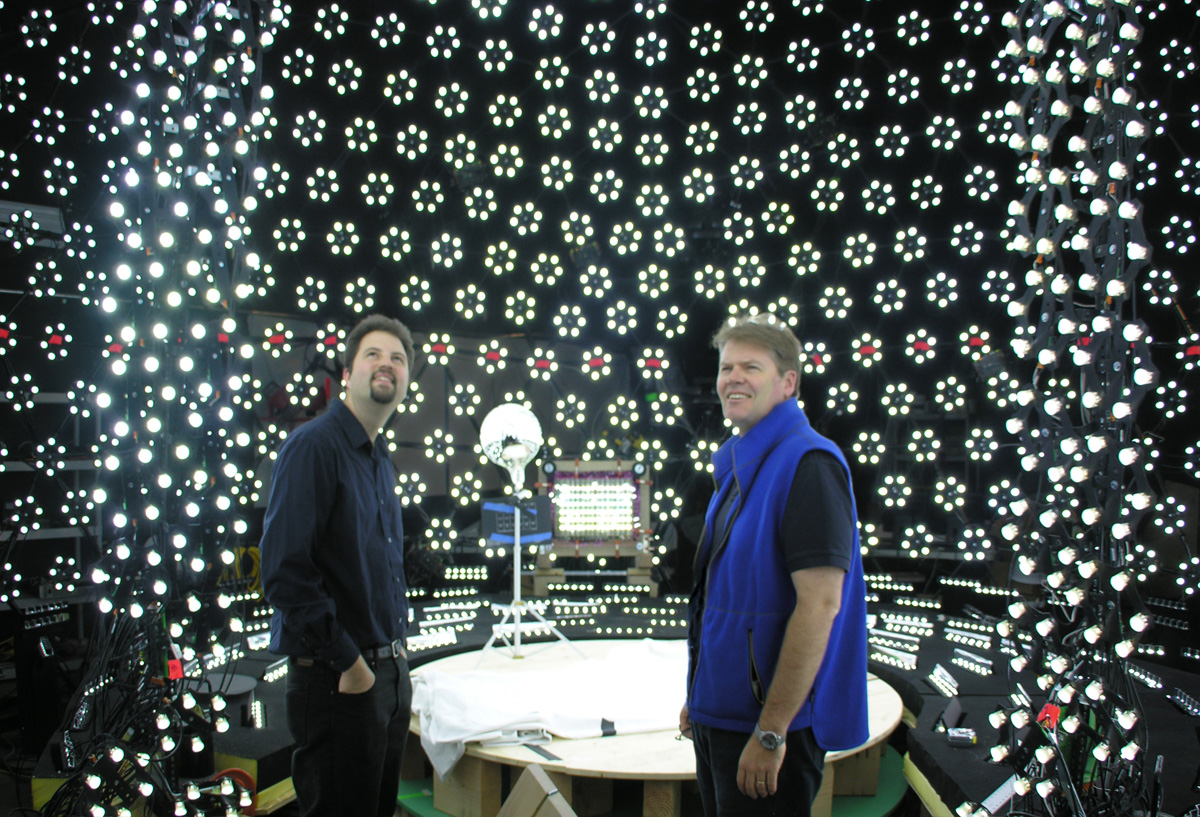First of all, thanks for all the questions everyone

I'll try to answer as best as I can.
I'll also focus on stereo photogrammetry for the following reasons:
- it's the most scalable, flexible, portable approach
- thus it is the most commonly used
- and it's also what I'm most familiar with.
The theory is that if you take pictures of a subject from multiple angles, under the same circumstances, then you can use software to identify tracking points and triangulate their position in 3D space, generating a point cloud which can be remeshed into a polygonal model. Obviously the more images you have and the closer the settings are, the more points you can identify.
It's cheap because all it requires are digital cameras and a fast computer.
However, it works a lot better if the lighting is as even as possible; and because live subjects can't stay completely still, you'll need to take all the pictures at once. So, a high end system will require many cameras, a proper studio setup, and advanced control systems to sync all cameras and lights and such.
How long does it take to scan a face?
Theoretically, all it takes is the time to take a single picture.
The overhead is a bit more complicated - if you have a scan rig with all the cameras properly set up, then it only takes a few minutes to get the talent in the scan area and prepare the system.
However, calibrating all the cameras may take considerable time, especially if you want to set up everything to a unique layout. You may also want to brief the talent, and maybe apply some marker paint on their faces.
Processing the data may take a few hours per scan, depending on the hardware.
If you use the same rig for face and body scans as well, then changing the camera setup can take a few hours.
Generally, a session of a neutral scan and 50-100 facial expressions, with briefing the actor, can usually be completed in about 4-6 hours; data processing can however take a few days altogether.
Is the model forced to stay as is?
Not sure what you mean... Usually for face scans, the actor has to sit completely still for the entire session. Most studios use some sort of head rest to make that easier.
Do you make the model perform certain actions?
If you want to build a face rig from the scans, then you'll absolutely want the actor to go through a range of expressions.
For body scans, it's not that common to go through Range Of Movement scans, but it certainly helps.
What software do you use to scan? What other softwares can do the job? For a hobbyist for professionals?
The two major apps I know about are Agisoft Photoscan and CapturingReality.
Agisoft is the most common, it's very robust and highly customizable. CR is faster, but it has an algorithm that tends to enhance the scan data which can create more detailed but less realistic results.
Agisoft has a cheap home user license and a pretty expensive pro license. CR is only available as a pro app as far as I know. Obviously Agisoft is for the hobbyists.
There are lots of other free apps, but they're not as advanced.
What type of equipment is required? Professional equipment vs do it yourself? Can you even do it yourself?
Photogrammetry can work even with a single camera, so it's the cheapest approach

The only downside is that taking 100+ photographs of any subject with the same conditions can be complicated - even for static objects, lighting can change, and you'll also have to be careful about the camera positions for each image.
A live subject can't stay still for even a single second, so a single camera won't work there.
High end systems are usually built with 30-200 DSLR cameras, even studio lighting with flashes synced to the cameras, and a lot of wiring to control the cameras and flashes and to download the data quickly. Mind you, this can mean hundreds of 10+ megapixel images per scan, so the system has to be really fast. At Digic we have an advanced system with custom wiring, software and such - but practically all studios have to develop this stuff on their own, too.
Still, scanning stuff like trees or sculptures of everyday objects is easily manageable on a pretty low budget. And also, environment scans (rocks trees buildings etc) are usually done with a single camera even for highend uses.
What is the usual type of processing required post scanning the model? What are common issues?
Scan data is basically a triangulated point cloud, with messy UVs. Basically useless for anything on its own

You usually want to clean up the scan manually in a sculpting app like Zbrush, and for that you need a more usable model built of quad polygons. Even zbrush has auto modeling tools to build that mesh, but there are a lot of other solutions as well.
Common issues with photogrammetry are:
- Hair and fur can't be scanned and it also messes up the scan data. Human subjects should be shaved and the hair should be covered by a cap.
- Deep recesses can't be scanned, like nostrils or ear canals, or the inner mouth and teeth. These have to be manually fixed with digital sculpting.
Are certain heads/faces/colour more prone to issues than others?
Facial hair is a no go, same for body hair. Without really diffuse lighting, the texture data won't be clean either.
Shiny objects and anything without a surface pattern will also mess up photogrammetry scans. Still, you can use structured light with a few projectors to compensate for this.

